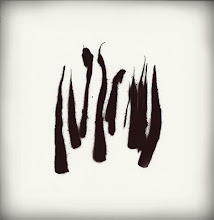By Ken Waxman
In JazzWord
"Tetuzi Akiyama/Éden Carrasco/Leonel Kaplan
Moments of Falling Petals
Dromos Records 001
Mary Halvorson/Reuben Radding/Nate Wooley
Crackleknob
hatOLOGY 662
Hautzinger/Okura/Akiyama
Rebuses
MonotypeRec. mono027
Combined, contrasted and contrapuntal guitar and trumpet textures – plus those of another instrument – are what tie together these notable sessions. Yet even though only a trio of instruments is involved on each – and Tokyo-based On-kyo guitarist Tetuzi Akiyama is present on two of the three CDs – the overall performances can readily be distinguished from one another.
More obviously separate is Crackleknob, the collaboration among three New York-based players: guitarist Mary Halvorson, bassist Reuben Radding and trumpeter Nate Wooley. Each has worked with a cross-section of other progressive players including composer Anthony Braxton (Halvorson), pianist Denman Maroney (Radding) and cellist Daniel Levin (Wooley). Not only that, but Wooley has also recorded in the past with Leonel Kaplan, a trumpeter from Buenos Aires with similar understated tendencies, featured on Moments of Falling Petals.
Kaplan’s associates on that disc are Akiyama, whose interests range across the electronic, improv and notated scenes, as well as Éden Carrasco, an alto saxophonist from Santiago. Akiyama – who plays a tape-delay electric guitar – is also on board for Rebuses, but his partners here are saxophonist and clarinetist Masahiko Okura from Tokyo, who plays with Japanese improvisers such as turntablist/guitarist Otomo Yoshihide; and Vienna’s quartet-tone trumpet specialist Franz Hautzinger whose playing partners range from synthesizer player Thomas Lehn to rock-styled ensembles.
On Rebuses the emphasis is strictly minimalist. Brass timbres leak onto toy guitar-like twangs produced by slurred fingering, abut barely breathed peeps and disconnected note patterns from the saxophonist, and rest on an undertow of electronic flanges, spins and clatters. Throughout, Akiyama’s licks aren’t often wedded to folksy finger-picking but concentrate instead on ringing chords and slack key approximations, circling the others’ tones and constantly launching envelopes of dissonant patterns. More upfront here than elsewhere, the guitarist’s downward-cascading licks plus crackling amp distortions bring forth belligerent split tones or vulture-like cawing from the reedist.
Occasionally Okura interrupts flat-line air expelling to complement with tongue slaps, fluttering squeals or rolling blows, the equally sporadic rubato squeaks from Hautzinger. For his part the trumpeter prefers tremolo grace notes which usually reflect back onto themselves. As well, in contrast to Akiyama’s divisive string rubs and chordal flanges, Hautzinger’s tongue-rolled air is connectively chromatic. Eventually collective note patterns shape the five long tracks into suite-like form.
More precious and much shorter, Moments of Falling Petals, with Akiyama on acoustic guitar, consists of a single track improvisation which moves between silencers, gentling undulations and unexpected crunching eruptions. With Kaplan’s timbres initially centred on muted growls and Carrasco’s on peeps, squeals and chromatic slurs, only Akiyama’s coldly outlined notes cut through the undifferentiated sonic and silences. Eventually his snaps and strums are challenged by side-slipping shrills and bell-muted pressure from the saxophonist plus spittle-encrusted angled grace notes from the trumpeter. Following a climatic water dam-like roar from the horns, and a subsequent extended period of silence, the piece’s final variation is divided among whimpering pressure from Kaplan, which becomes louder and more atonal by the end; brassy spetrofluctuation from Carrasco; and microtonal slurred fingering from Akiyama – with a conclusive resonating twang.
Moving north from Buenos Aires to Brooklyn, not only do Halvorson, Radding and Wooley run through 10 tunes in less than 48½ minutes, but each number also has a quirky title. The game plan here involves triple counterpoint with an emphasis on dissonant unison harmonies. Performances by this trio are as macro as the others are micro, without losing sight of post-modern minimalism that is mixed with jazz-styled improvisations.
In this context at least, Halvorson’s output is spikier and louder than Akiyama’s. During the course of “Libidinous Objects & the Decay of Self”, for instance, she works herself from watery chromatic picking to distorted lines and finally into a display of scattered notes and slurred staccato fingering. Radding thickly thumps in response, while Wooley leaks the odd brass tone. Meanwhile, “In the Teeth of Ideology” serves as a showcase for the bassist, whose wood-splintering-like scrubs and col legno ruffs replace his usual thick stopping and walking. Stepping back to strum, the guitarist cedes the remaining space to Wooley, whose hushed output is simultaneously lyrical, wispy and Impressionistic.
Elsewhere each seems to be vying to discover whose playing can be the most moderato and low-pressured. However an extended improv such as “Quavering Voices of the Mutilated” shows off their multi-directional counterpoint in greatest detail. With the broken chord action connected by Radding’s pumping lines, the guitarist moves from chunky rasgueado to spidery fingering while the trumpeter’s interpolations evolve from tremolo buzzing to sounds that are fortissimo, shrill, grainy and slurred. When this centrifugal performance climaxes, silences, delay and discursion eventually combine into lyrical connectivity.
Although Crackleknob distinguishes itself from the other two sessions with a brash – perhaps New World-styled – forthrightness, each of the CDs demonstrate winning methods for enlivening trumpet-guitar trio sessions that simultaneously explore and evolve. "
domingo, 28 de março de 2010
Moments Of Falling Petals review in JazzWord
Subscrever:
Enviar feedback (Atom)











Sem comentários:
Enviar um comentário